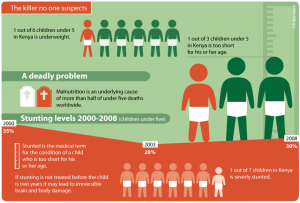This article summarizes a research paper presented at the 2014 Computation + Journalism Symposium. Jonathan Hewett (@jonhew) is director of Interactive and Newspaper Journalism at City University London, where he leads the Interactive Journalism MA.
It is four years since Tim Berners-Lee, the inventor of the World Wide Web, declared that “data-driven journalism is the future.”
But how long will it take for data journalism to to become an everyday practice in newsrooms?
News organizations and journalism educators are addressing that question.
Back in 2010, data already had an established but narrow foothold – notably in financial journalism — and deeper roots in computer-assisted reporting (CAR), particularly in U.S. newsrooms. But data journalism was ready to come of age: this was the year in which journalists grappled with the WikiLeaks war logs from Iraq and Afghanistan, and the U.S. embassy cables, for example. The open data movement was gathering pace, and governments were starting to collate and publish data sets online.
In the U.K. that year, the Treasury finally released a 120GB file of government spending, with 24 million entries – having previously refused Freedom of Information (FOI) requests for it. FOI was a relative newcomer in the U.K., having come into force only in 2005, but some reporters had seized on it to break data-driven stories.
Both FOI and data lay at the heart of one of the biggest scoops of the decade in 2009, on expenses claimed by Members of Parliament (although the core material was ultimately leaked before it was due for release with redactions).
Since 2003, CAR training (primarily for established journalists) had become a regular feature of the London summer school run by the Centre for Investigative Journalism. It brought in some U.S. CAR pioneers as trainers, including David Donald, Brant Houston, Aron Pilhofer and Jennifer LaFleur.
At the student level, journalism education had by then expanded rapidly at U.K. universities and was incorporating investigative classes — followed by FOI and elements of CAR. Curricula began slowly to reflect industry’s shift to the web, too.
Such developments helped to lay the foundations for data journalism in the U.K. The first journalism students to take a module dedicated to data journalism arrived at City University London in September 2011, as part of a new Interactive Journalism MA.
Its scope is wider than data journalism alone, but this has increasingly become the next step for the program’s graduates; almost half of the 2013–14 cohort went to work in data journalism. Others have been using their data expertise in other roles, even if not as ‘data journalists.’
One of the challenges has been to design and run a program that remains relevant while the practices, tools and theories of data journalism continue to evolve rapidly.
As an interdisciplinary field, too, it needs to take account of developments in areas such as computing, statistics and visualization. Involving current data journalists, who teach much of the data module, has been crucial.
This also reflects a key approach of the Department of Journalism, where practitioners play an important role. We have been fortunate to have leading data journalists teaching on the Interactive program – two successive data editors from The Guardian — Simon Rogers (now at Twitter) and James Ball — John Burn-Murdoch of the Financial Times and my colleague Paul Bradshaw, a leading data journalism trainer.
As well as learning and practicing data journalism, the students also report on it. They treat data as their beat, in effect, keeping themselves (and others) up to date. They research and publish blog posts on their own websites and/or on the Interhacktives site that they run together.
They interview data journalists; produce ‘how to’ posts and tutorials; critically analyze pieces of data journalism; review and reflect on their own work; and evaluate relevant new tools or techniques. As part of this, students are encouraged also to explore and experiment intelligently.
We encourage students to get involved in relevant events, too, such as Hacks/Hackers London and the Mozilla Festival; two teams took part in the Build the News hackathon run by the digital team of The Times and Sunday Times this October.
It has not all been plain sailing. Some students have struggled with the statistical and/or technical demands of data journalism, for example. The predominantly arts/humanities background of most students arguably makes for a steep learning curve. On the whole, it appears not to hold them back; only a few of the alumni now working as data journalists have a first degree in a science or social science discipline. An element of self-selection may be involved here, of course.
Starting any new master’s program brings challenges – and in the market-oriented environment of higher education, this includes attracting students and their tuition fees, on which universities rely. Some may be drawn to the career prospects, which look stronger for those engaging with data and computing than in other areas of journalism.
Now in its fourth year, the Interactive Journalism MA — which is geared to digital journalism, not only data, and also specializes in strategic social media and engagement — has attracted sufficient students to continue. It has not suffered from a deluge of applications from would-be data journalists. Its graduates seem to be getting jobs without too much difficulty (a relative term in journalism). Out of 36 graduates so far, 11 have gone on to work as data journalists and a further eight in data-related roles.
Wherever their careers take them, change looms large. Twenty-five years ago, Philip Meyer, the ‘father’ of CAR, called for the term ‘computer assisted reporting’ to be abandoned. It was “an embarrassing reminder that we are entering the 21st century as the only profession in which computer users feel the need to call attention to themselves.” Data journalism is becoming a worthy successor. Perhaps current students will work in a world of journalism where the ubiquity of working with data means it no longer merits special attention.








Leave a Comment